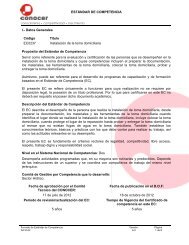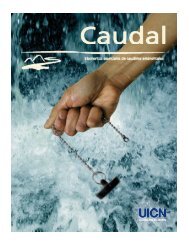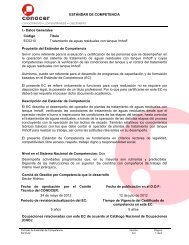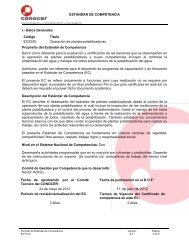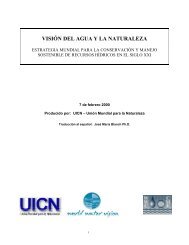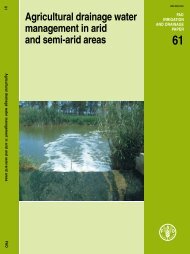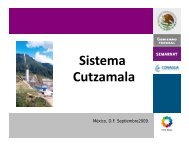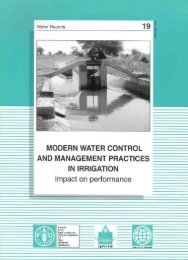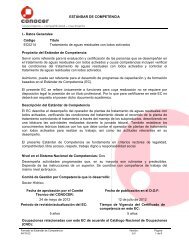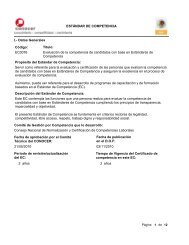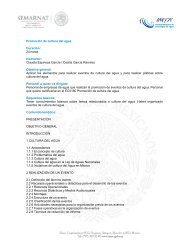An Assessment of the Status of Biodiversity in the Muthurajawela ...
An Assessment of the Status of Biodiversity in the Muthurajawela ...
An Assessment of the Status of Biodiversity in the Muthurajawela ...
You also want an ePaper? Increase the reach of your titles
YUMPU automatically turns print PDFs into web optimized ePapers that Google loves.
1. Introduction<br />
<strong>Muthurajawela</strong> is <strong>the</strong> largest sal<strong>in</strong>e coastal peat bog <strong>in</strong> Sri Lanka, located on <strong>the</strong> west coast<br />
(70 0 3’N, 79 0 55’E) between <strong>the</strong> Negombo lagoon and Kelani river and spread<strong>in</strong>g <strong>in</strong>land upto<br />
Ragama and Peliyagoda <strong>in</strong> <strong>the</strong> Gampaha District (Figure 1). The marsh, toge<strong>the</strong>r with <strong>the</strong><br />
Negombo lagoon forms an <strong>in</strong>tegrated coastal wetland ecosystem (6,232 ha <strong>in</strong> total extent). The<br />
marsh-lagoon complex is estimated to have orig<strong>in</strong>ated about 5000 years BC (CEA/<br />
Euroconsult, 1994). The ma<strong>in</strong> water source to <strong>the</strong> marsh is Dandugan Oya which dra<strong>in</strong>s a<br />
catchment <strong>of</strong> 727 km 2 and discharges at <strong>the</strong> <strong>in</strong>terface <strong>of</strong> <strong>the</strong> lagoon and <strong>the</strong> marsh, while <strong>the</strong><br />
marsh is traversed by a navigational canal constructed dur<strong>in</strong>g <strong>the</strong> Dutch colonial period. The<br />
area receives an annual average ra<strong>in</strong>fall <strong>of</strong> 2000-2500mm, while <strong>the</strong> average annual<br />
temperature is 27 0 C (Samarakoon and Renken, 1999). Accord<strong>in</strong>g to historical evidence,<br />
<strong>Muthurajawela</strong> was subjected to extensive cultivation <strong>of</strong> paddy, more than 500 years ago<br />
(GCEC/Euroconsult, 1991).<br />
The <strong>Muthurajawela</strong> marsh-Negombo lagoon wetland system has served multiple uses<br />
<strong>in</strong>clud<strong>in</strong>g fishery, agriculture, trade and shipp<strong>in</strong>g and habitation s<strong>in</strong>ce historical times.<br />
Fur<strong>the</strong>rmore, previous studies carried out <strong>in</strong> <strong>the</strong> area clearly highlight <strong>the</strong> ecological<br />
significance <strong>of</strong> <strong>the</strong> <strong>Muthurajawela</strong> marsh, which covers 3068 ha (Samarakoon & Van Zon,<br />
1991). Scott and Pools (1989) have listed it as one <strong>of</strong> <strong>the</strong> 12 priority wetlands <strong>of</strong> Sri Lanka, <strong>in</strong><br />
a status overview <strong>of</strong> Asian wetlands. Upon recogniz<strong>in</strong>g <strong>the</strong> ecological significance <strong>of</strong><br />
<strong>Muthurajawela</strong>, <strong>the</strong> Government <strong>of</strong> Sri Lanka declared <strong>the</strong> nor<strong>the</strong>rn section <strong>of</strong> <strong>the</strong> marsh<br />
cover<strong>in</strong>g an area <strong>of</strong> 1777 ha as a sanctuary <strong>in</strong> July 1996, under <strong>the</strong> Fauna and Flora Protection<br />
Ord<strong>in</strong>ance, which is adm<strong>in</strong>istered by <strong>the</strong> Department <strong>of</strong> Wildlife Conservation (DWLC).<br />
The location <strong>of</strong> <strong>the</strong> <strong>Muthurajawela</strong> wetland <strong>in</strong> a rapidly develop<strong>in</strong>g urban area, makes it an<br />
extremely vulnerable ecosystem. At present, this wetland is be<strong>in</strong>g rapidly degraded by<br />
<strong>in</strong>adequately planned development activities and o<strong>the</strong>r detrimental activities related to<br />
grow<strong>in</strong>g human population pressure. Therefore, IUCN Sri Lanka undertook a systematic<br />
survey to document <strong>the</strong> present status <strong>of</strong> biodiversity <strong>in</strong> this coastal wetland, for <strong>the</strong> purpose <strong>of</strong><br />
safeguard<strong>in</strong>g <strong>the</strong> ecological functions, resources and values <strong>of</strong> <strong>the</strong> <strong>Muthurajawela</strong> Wetland<br />
Sanctuary. This paper <strong>in</strong>tends to highlight <strong>the</strong> biodiversity values <strong>of</strong> <strong>Muthurajawela</strong>, and<br />
provide scientific knowledge <strong>in</strong> a simplified manner to facilitate future <strong>in</strong>itiatives to conserve<br />
this valuable coastal wetland ecosystem.<br />
2



